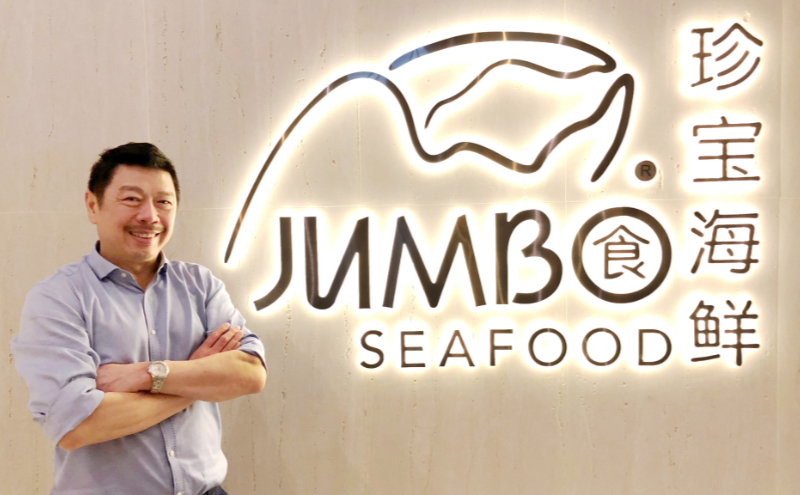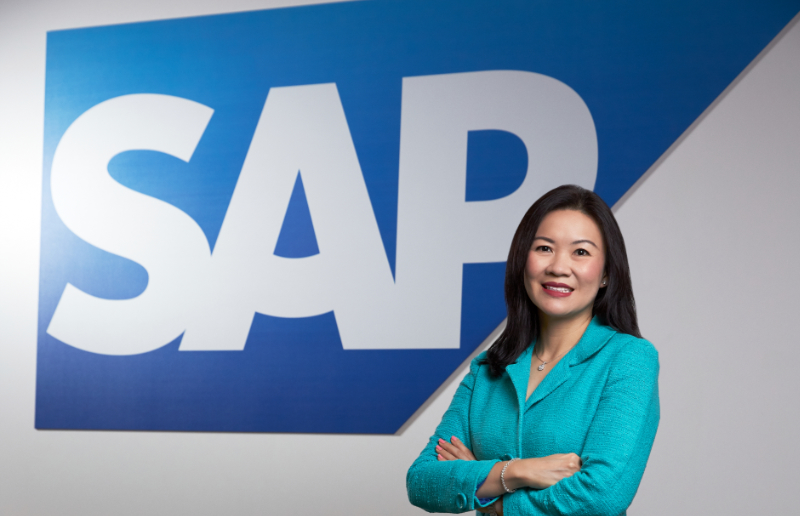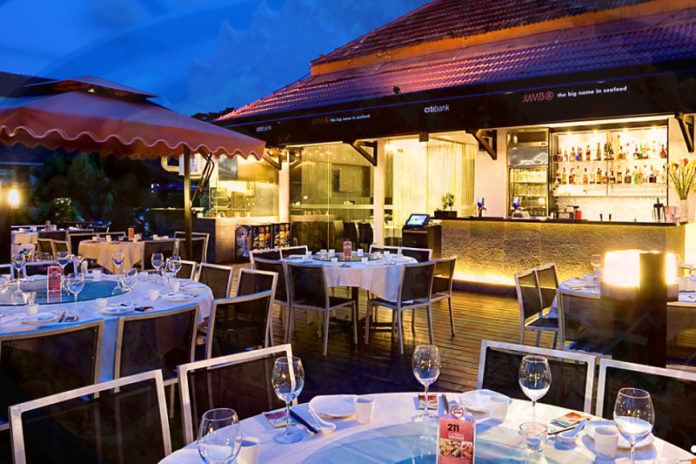Digital transformation is impacting every facet of a company’s operations. This may include human resources, marketing, collaboration, and consumer processes. For restaurants, in particular, it is becoming increasingly common to digitalise processes like inventory management, online ordering, point-of-sale (POS) systems, and more.
These efforts to digitalise, however, are not pursued for the sheer novelty of it. Today, it is becoming increasingly vital for organisations to embrace technology as part of transformation strategies to create seamless and highly customised business processes across all channels.
Jumbo Group, a restaurant chain based in Singapore, recently teamed up with enterprise software giant SAP to scale its digitalisation plans. To learn more about how digital journeys work for such organisations, Frontier Enterprise got in touch with Ang Kiam Meng, Executive Director and Group CEO at Jumbo Group, along with Eileen Chua, Managing Director at SAP Singapore, to discuss the enterprise resource planning (ERP) software Jumbo uses, the impact of its deployment on Jumbo’s staff, and more.
First ERP foray

Jumbo’s initial taste with an ERP system was seven years ago, with another vendor. “This was when ERP was still a niche solution,” noted Ang. “With lack of available support, essential ERP knowledge, proper planning, and a strong vendor to guide us along with the implementation, our system was somewhat fragmented. We had to make various modifications to our standard system flow and setup, to cater to existing business practices,” he said.
However, the modifications posed challenges when Jumbo tried to utilise the systems for other business processes, as the data structure and configurations in the existing ERP system could not stitch up different parts of the business processes seamlessly.
“To make the interface more user-friendly, we also developed our proprietary application to facilitate the processes performed by our outlet staff, who are usually less tech-savvy,” Ang shared. Unfortunately for the restaurant chain, the development and maintenance of an entire app were time- and resource-consuming.
Jumbo recognised that a proper ERP system was critical to having adequate data maintenance, collection, and analysis. “Instead of trying to troubleshoot the issues with the existing system and rectify legacy issues, we decided to start fresh with an entirely new system,” Ang explained.
“This (fresh start) would give us a chance to evaluate and design our data from a clean slate, refine our business processes to align with industry practices, and take into consideration the needs and requirements of other users within the organisation, which seemed to be more rational and beneficial in the longer run, if executed properly,” he added.
Factors considered
Some of the key considerations that Jumbo had when choosing the solution included the following:
- It should be catered towards retail and F&B (food and beverage) operations, and have established workflows to address standard retail business processes and needs.
- A consolidated master data framework to ensure consistencies in data flow.
- System interoperability so it could integrate with different point-of-sale (POS) systems and other applications/systems used by the company.
- Availability of resources for do-it-yourself troubleshooting and an abundance of professional expertise in implementation and addressing complex issues.
- An easy-to-navigate interface for end-users at our outlets.
Ang said SAP’s S/4HANA and Customer Activity Repository (CAR) solutions meet most of these key requirements.
Initial benefits
According to Ang, Jumbo’s POS system is integrated with CAR, which serves as a central repository of all their sales data “at the most granular level”. CAR is said to act as a data integrity control check, with almost “no tolerance for errors” in data reconciliation, said Ang.
Moreover, Jumbo is integrating S/4 HANA with their business intelligence tool to make data and analysis available to and convenient for their managers.
While still in the initial phase of system implementation, Ang observed that SAP’s ERP has significantly impacted Jumbo’s outlet staff, particularly their chefs, as well as their central system colleagues.
“We have migrated several manual processes into the system, and it’s fair to say that many are still getting used to the new workflows and the idea of having to navigate the system,” Ang remarked. “Though faced with some resistance initially, many of our staff are slowly embracing the changes as they start to see the value to Jumbo.”
In terms of specific benefits, some of Jumbo’s standard processes – such as stock taking (i.e. counting of on-hand inventory) and inventory reconciliation – have been reduced from a week to just a day to complete. Ang also revealed that various data, particularly at the warehouse side (such as quality checks at receiving) are being properly captured into the system. Furthermore, inventory balance and important data on stock, such as expiry dates, are available directly from the system.
The SAP deployment, said Ang, gives Jumbo the momentum to explore other emerging technologies in the future. This includes the Internet of Things to improve outlets and central kitchen operations, and artificial intelligence to help create more personalised customer experiences.
Differentiating SAP ERPs

SAP Singapore’s Chua believes that what truly sets S/4HANA apart from ERP competitors is that it integrates “every aspect” of a company’s operations. S/4HANA Retail, in particular, aims to provide customers in the retail sector the groundwork for master data, logistics, digital channels, and end-to-end processes.
Chua outlined several benefits that SAP’s ERP software provides Jumbo. First is fewer stock-outs: “Supply chains – especially those involving suppliers in Southeast Asia – are typically complex and require a high level of agility, with short product life cycles as the norm,” she observed. “In Jumbo’s case, it’s their hero ingredient – seafood. S/4HANA Retail makes it possible to track procurement journeys and intervene in an ad hoc and automated manner.”
According to Chua, revenue loss due to seasonal goods arriving too late is between 3%-5% lower with S/4HANA Retail. The reduction in overall supply chain planning costs ranges from 10%-20%.
Another advantage, said Chua, is lower inventory costs. “Whereas stock information used to be spread across many tables and was not up to date, it is now unified in a single journal. If stocks of a product are running low, a retailer can intervene centrally and place a repeat order in good time. Bottlenecks occur much less frequently.”
This is said to result in better inventory accuracy, which ranges from 30%-40%. Chua said this leads to higher inventory turns, as inventory carrying costs fall by between 10%-15%.
The main difference between S/4HANA and S/4HANA for Retail is the target industry. “SAP S/4HANA Retail is SAP’s industry-specific solution for the retail sector,” explained Chua.
“SAP S/4HANA Retail replaces the traditional SAP Merchandising solution (otherwise known as SAP IS-Retail and SAP ERP Retail), which will continue to be supported by SAP until maintenance ends in 2025. As the digital core, SAP S/4HANA Retail for merchandise management will form the transactional backbone for the entire retail scenario in the SAP S/4HANA suite of the future,” she said.
Deployment challenges
Chua noted that when deploying SAP’s solutions, they had to overcome the challenges faced by Jumbo’s previous ERP project. This involved collaboration between SAP and Synnove Teams to listen to Jumbo’s business challenges – including their immediate and future needs – as the restaurant chain transforms.
“Jumbo’s focus in this transformation was to have an integrated system that would enable them to analyse data that facilitates business planning whilst executing their daily operations,” said Chua.
She added that CAR helped Jumbo by:
- Remedying their ERP foundations and further building an optimised procurement strategy on top of this foundation.
- Addressing their challenge of collating data for insights in their previous system.
“The challenge now is to transform all these insights into strategies that would propel the group to greater heights,” Chua said.
What’s in the pipeline?
When asked what SAP was working on in their development labs, Chua shared that they are creating a sandbox that “facilitates innovation, collaboration, and partnerships”, with the intention of helping customers and partners co-create products that incorporate ERPs, human resource management, customer relationship management, and data analytics solutions.
SAP has also been developing applications that revolve around the core foundation of S4HANA Retail and CAR. “These applications have a wide area of focus, starting from planning applications such as Replenishment, Allocation, and Assortment planning to core retail operations such as Store Operations,” Chua shared.
“Even though they cover a wide spectrum of retail processes, our aim is to provide retailers a solution that allows them to capture all business relevant data and make the best use of them while operating,” she concluded.
















